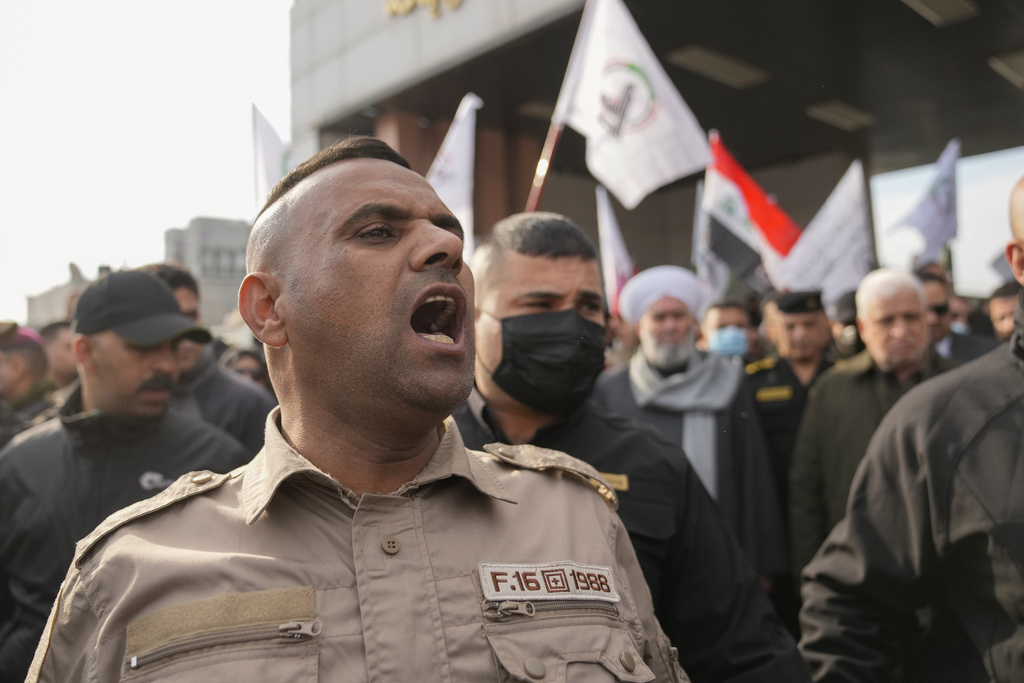The United States and Britain have struck Iran-backed armed groups in Syria, Iraq and Yemen, while Israel presses ahead with its offensive against Hamas in Gaza. Here is what to know about what is happening in the region now, and why:
US ATTACKS ON GROUPS BACKED BY IRAN
On Friday, the U.S. struck Iran-backed armed groups in Iraq and Syria in retaliation for the killing of three American soldiers at a U.S. base on the Syria-Jordan border. At the same time, Washington emphasized that it doesn’t want to escalate the conflict with Iran into outright war.
To date, the militias have not struck back, indicating that they don’t want all-out war with the U.S. either.
WHY THE US IS IN THE REGION
U.S. troops maintain a presence in the area to fight the Islamic State group. They returned to Iraq in 2014 after the extremists overran much of the country’s north and started a genocidal campaign against the Yazidis, a religious minority. U.S. forces are also present in Syria, where they work with Kurdish-led fighters to keep pressure on IS, as well as in Jordan, a long-standing Western ally. The U.S. rushed additional warships to the region after Hamas’ attack on Israel on Oct. 7 and the start of the war in Gaza to deter Iran and its clients from further escalation.
STRIKES ON YEMEN’S HOUTHI REBELS OVER RED SEA ATTACKS
Separately, American and British forces have repeatedly struck Houthi rebels in Yemen, who are also backed by Iran. This was in response to persistent Houthi missile and drone attacks on international shipping in the Red Sea, one of the world’s most important shipping lanes.
The Houthis say their attacks are to put pressure on Israel to cease its campaign in the Gaza Strip. The U.S. and Britain say their goal is to protect free navigation and trade in the Red Sea, which has already seen a big drop in cargo traffic as a result of the attacks.
THE WAR IN GAZA IS AT THE HEART OF IT ALL
All these events are linked to the war in Gaza, which began with Hamas’ Oct. 7 raid into southern Israel. Palestinian militants killed some 1,200 Israelis and kidnapped around 250 that day. Israel responded with an air and ground campaign that has so far killed over 27,000 Palestinians.
The United States, Qatar and Egypt are trying to negotiate a cease-fire to free the remaining hostages and provide relief to the Palestinian people, most of whom are displaced from their homes. More than 100 captives were released during a weeklong truce in November in exchange for Palestinian prisoners.
HOW THE WAR COULD AFFECT THE REGION IN THE LONG TERM
The Israel-Hamas war is reverberating across the entire Middle East. The U.S. and Israel on one side and Iran and its militant allies on the other each see themselves as responding to and deterring aggression from the other. Israel views Iran as its greatest threat, while Iran considers its alliance of militant groups a way to pressure Israel and deter an attack by Israel or the United States.
Neither side is believed to be seeking a broader war, but a miscalculation could send the region spiraling toward one. The danger may be the biggest across the Israel-Lebanon border, where Israeli forces and the Iranian-backed militant group Hezbollah have engaged in low-intensity fighting since the war in Gaza started.
(AP)











